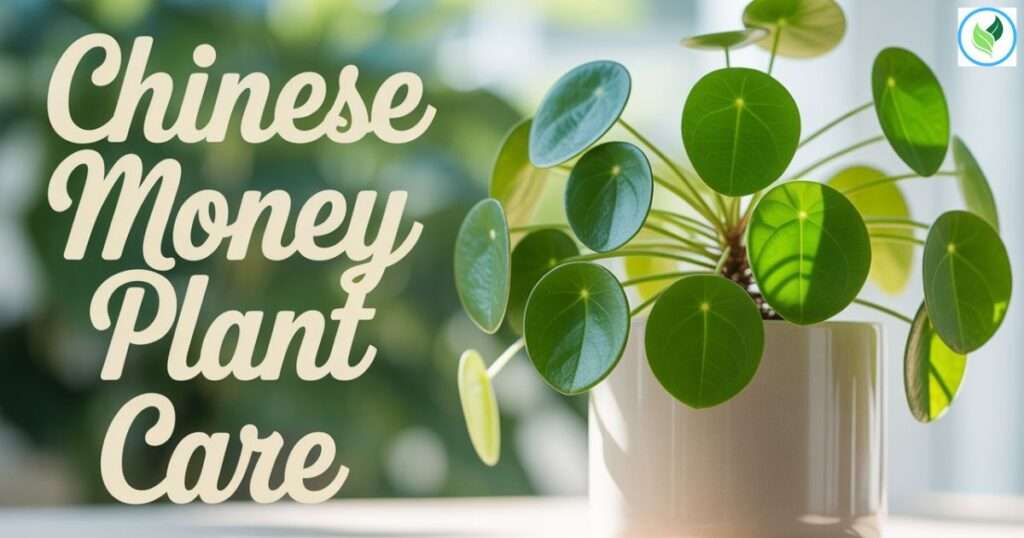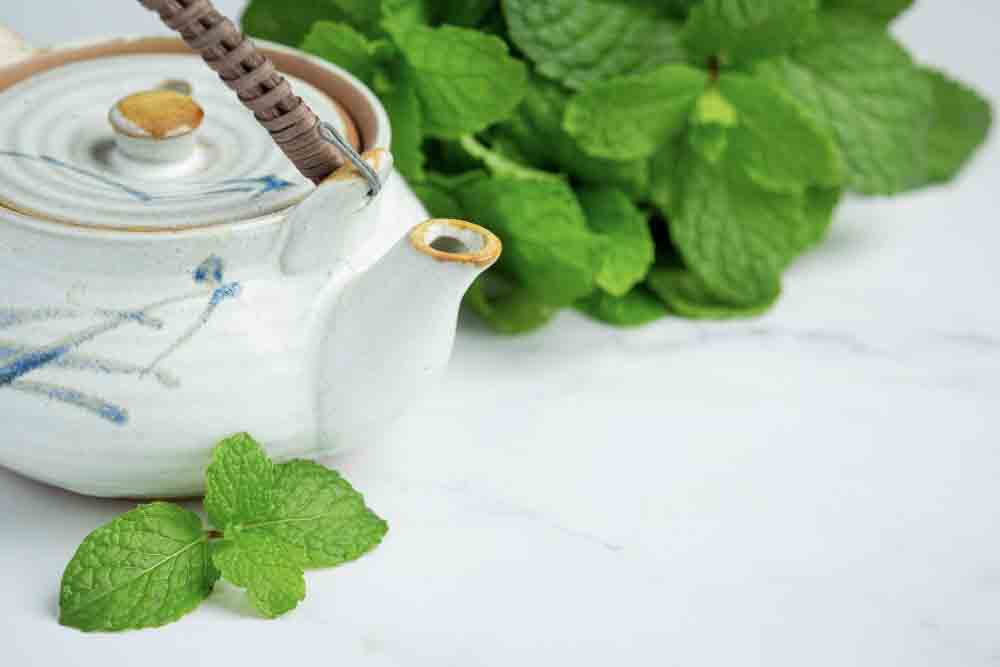The Chinese money plant might be the perfect choice if you’re looking for a beautiful, beginner-friendly indoor plant. It is familiar as the coin plant (Pilea peperomioides). This plant is famous for its round, coin-shaped leaves and modern, minimalist appeal. It’s easy to grow, thrives in most U.S. homes, and is one of the most popular pet-safe houseplants.
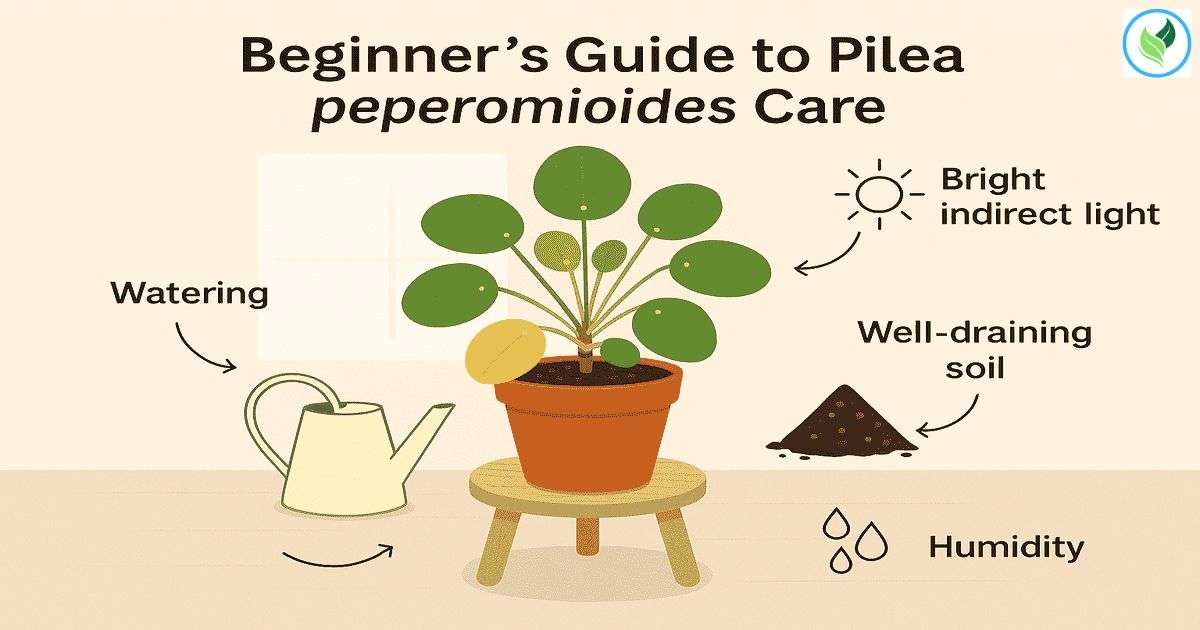
With proper lighting, soil, and watering for your Chinese money plant, your Pilea can thrive and remain healthy throughout the year. This plant is also a favorite in Feng Shui plants culture, said to attract wealth and harmony. In this complete guide, we’ll walk you through the best tips for Chinese money plant care that actually work.
Plant Profile: What Is a Chinese Money Plant?
Native to China, this beautiful plant became popular across the globe because of its unusual shape and simple care needs. It belongs to the Urticaceae family and grows up to 12 inches tall. The plant is admired for its coin-shaped leaves, which resemble little green pancakes. In Feng Shui plants culture, it is believed to bring luck and money, which is why many call it a lucky plant.
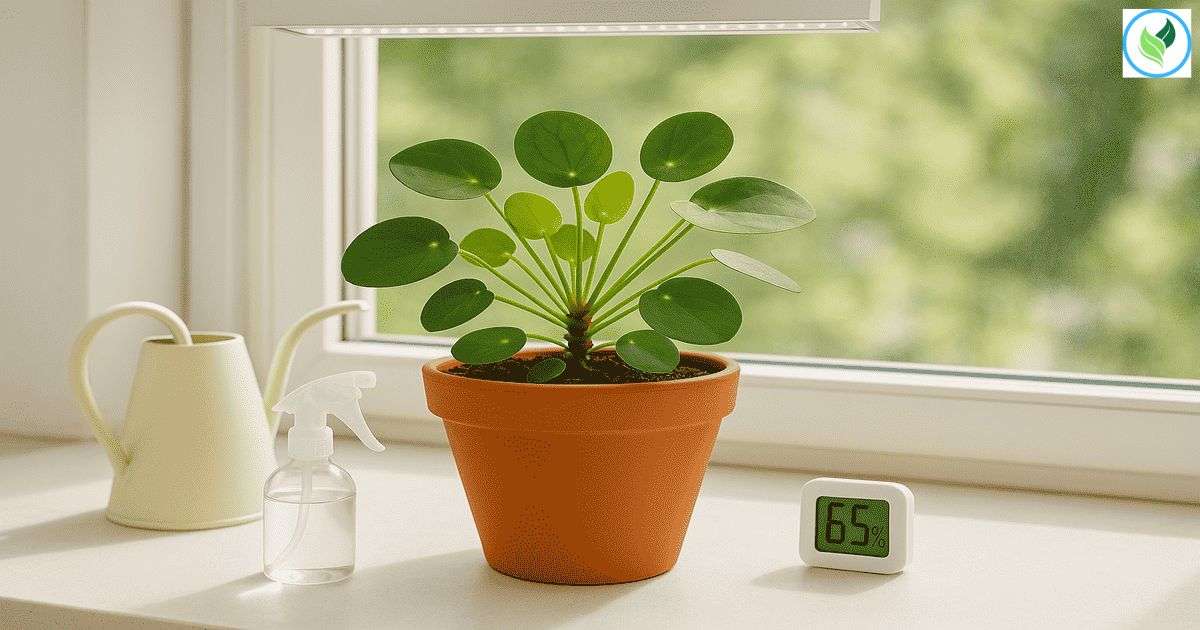
People love the friendship plant, meaning because you can easily grow new plants and gift them to others. It is a pet-safe houseplant, meaning you can keep it around dogs and cats without worry. If you’re interested in growing Chinese money plant indoors, you’ll find it to be a simple and rewarding experience.
Light Requirements for a Healthy Pilea
Chinese money plant lighting needs are simple but important. This plant loves bright indirect light. Place it near a window that gets morning or evening sun, like an east or west-facing window. Direct sunlight can scorch the leaves, while too little light makes the plant grow leggy with small leaves. If you’ve ever asked, can Pilea grow in low light?, the answer is yes, but it won’t thrive.
Plants grown in the best lighting conditions for Pilea will stay compact and full. Rotate the pot once a week to keep it growing evenly on all sides. Good light also helps prevent many Pilea problems and solutions like yellowing leaves or slowed growth. A well-lit room with no harsh afternoon rays is ideal for this plant.
Watering Your Chinese Money Plant the Right Way
Understanding Chinese money plant watering is key to keeping it alive. Always let the top 1-2 inches of soil dry before watering. Too much water causes plant root rot, and too little causes drooping. If you’re unsure how often to water a Pilea, start by checking the soil every few days. Water less in winter and more in summer.

Some common Pilea leaf problems include brown tips and leaf drop. These are often signs of over-watering Pilea. If your leaves are yellowing and dropping, you might be over-watering it. This is one of the biggest mistakes when learning how to care for a Chinese money plant.
Table: Watering Schedule Guide
|
Season |
Frequency |
|
Spring/Summer |
Every 5 to 7 days |
|
Fall/Winter |
Every 10 to 14 days |
Temperature & Humidity Needs
The temperature requirements for Pilea peperomioides are very similar to what we like. Keep your plant in a room that stays between 60°F and 75°F. Avoid placing it near heaters, vents, or drafty windows. A short cold period during winter can encourage blooming Chinese money plant indoors.
Indoor plant humidity also matters. While this plant doesn’t need a rainforest, very dry air can harm it. In winter, if your air is dry, mist the plant or place it near a humidifier. This can help prevent why are my Pilea leaves curling?, which often happens in dry conditions.
Choosing the Right Soil & Potting Mix
Using the best soil for Pilea peperomioides will prevent many problems. Go for a rich, well-draining mix with peat or coco coir, plus some perlite. This creates the perfect Pilea soil type. Avoid heavy soils that hold too much water, as they lead to over-watering houseplants and root rot.
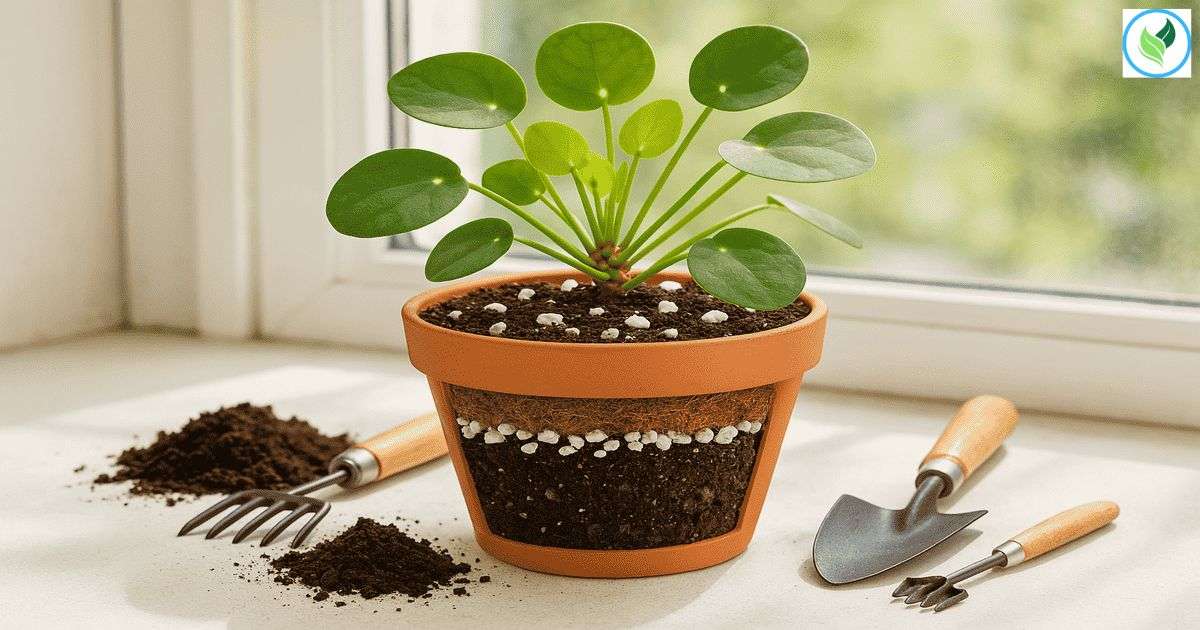
You can also make your own mix at home. Combine equal parts peat moss, perlite, and potting soil. A pH between 6.0 and 7.0 is best. Good soil lets air reach the roots and drains water quickly. If your plant shows yellow leaves, poor soil might be part of the problem.
Potting and Repotting Chinese Money Plant
Knowing when to repot Chinese money plant is important for healthy growth. If you see roots coming out of the bottom of the pot, or your plant looks crowded, it’s time. Usually, repotting Pilea should happen every 1-2 years. Spring is the best time to repot.
Use a pot just one size larger with a drainage hole. Terracotta pots dry faster, while plastic or ceramic hold more moisture. If your plant becomes top-heavy or growth slows, check the roots. A fresh pot with new soil often gives your Pilea a fresh boost of energy.
How to Get Your Chinese Money Plant to Bloom
While rare, Pilea peperomioides bloom can happen indoors. The flowers are tiny and white, appearing on thin stalks. The best way to trigger blooming is to give the plant a short cold period in winter. Move it to a cooler room for a few weeks, then back to normal light and warmth.
Don’t worry if yours never blooms. Most people grow them for their leaves, not flowers. Still, some Pilea pruning and care helps. Remove old or damaged leaves, feed it properly in spring, and make sure it gets plenty of light. With luck, a bloom may surprise you!
How to Propagate a Chinese Money Plant
The good side of this plant is the simplicity of propagating Pilea. Little baby plants, known as pups, develop around the base. These are perfect for offshoots propagation. Wait until they are a few inches tall, then gently separate them using clean scissors or pruners.
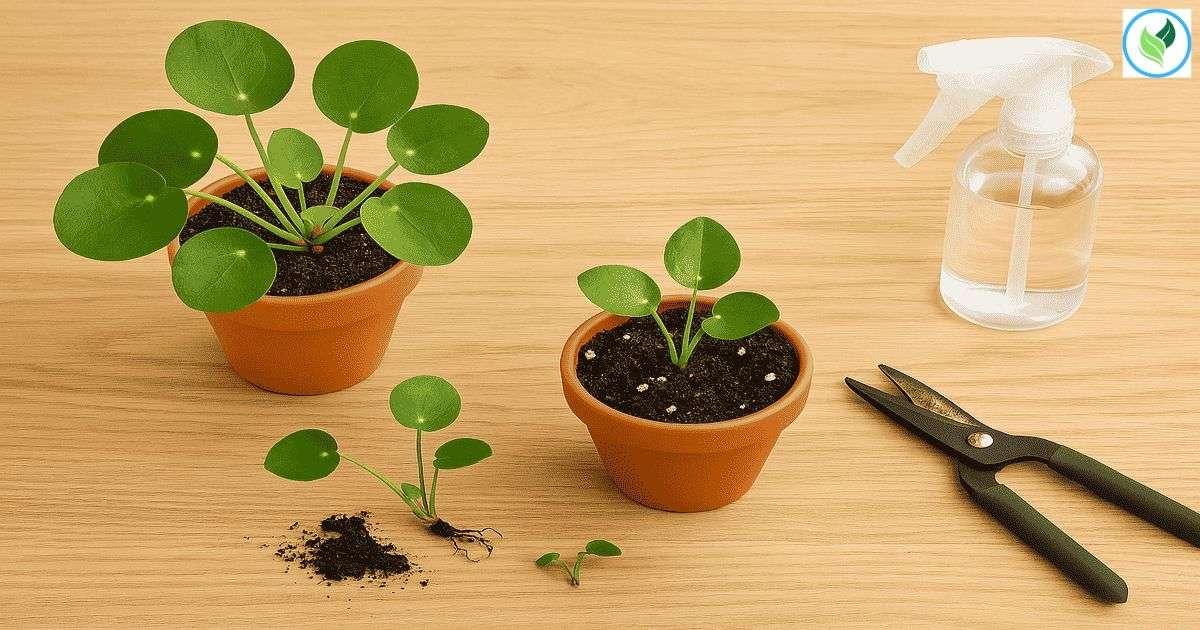
You can root them in water or soil. Many people wonder how to propagate Chinese money plant in water. Just place the cutting in a glass of water with indirect light. Roots form in 1-2 weeks. Once rooted, move it to soil. It’s fun to share these with friends—an authentic part of the friendship plant meaning. If you enjoy growing your own plants, you might also love discovering the surprising health benefits of guava, another rewarding plant to explore.
Common Pests and How to Deal With Them
Even though this plant is tough, it can still face Chinese money plant pests. The most common is spider mites houseplants. These tiny bugs spin webs under leaves and suck the sap. You may also see fungus gnats, mealybugs, or scale insects.

Use natural pest control for houseplants like neem oil or insecticidal soap. Wipe down leaves weekly and inspect often. Keep new plants away from your Pilea until you’re sure they’re clean. Healthy plants are less likely to suffer from infestations, so good care is the best prevention.
Common Problems and Troubleshooting
Sometimes you may wonder, what causes leaf drop in Chinese money plant?. It could be too much water, sudden temperature change, or low light. If you see yellowing leaves Pilea, the soil might be soggy or too dry.
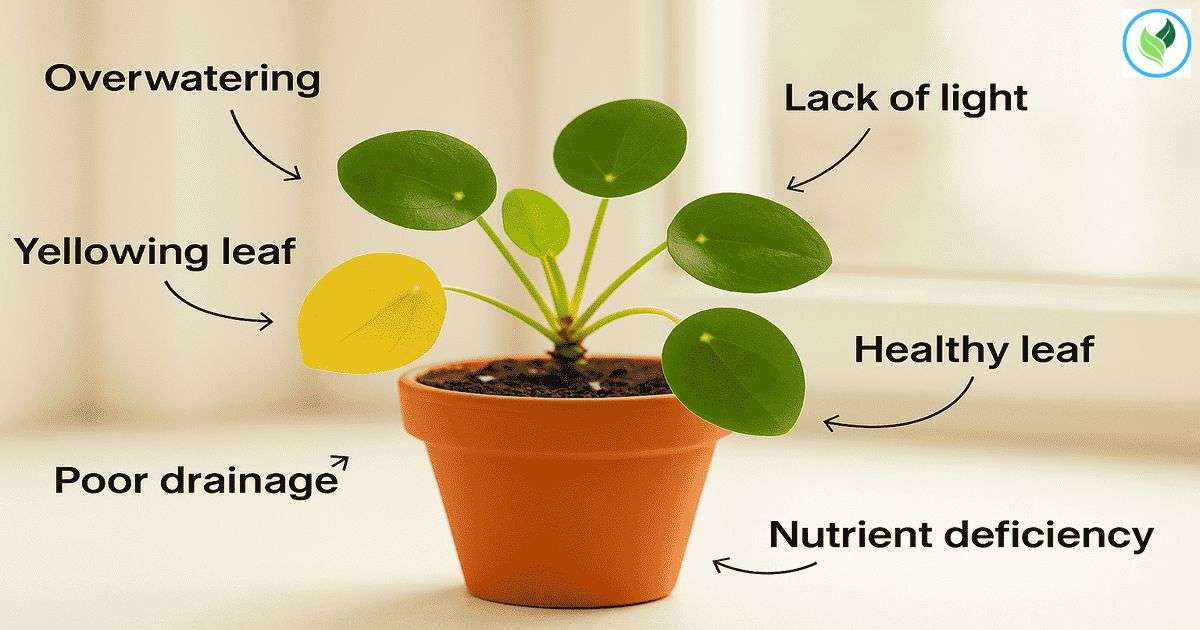
If you’re trying to learn how to fix brown tips on Chinese money plant, check humidity levels. Brown tips usually mean the air is too dry or water has too many minerals. Why are my Pilea leaves curling? can also be because of low humidity or too much direct sun. Addressing the cause quickly keeps the plant happy.
Is the Chinese Money Plant Toxic to Pets?
Is Chinese money plant pet safe? Yes, it’s easy to grow, thrives in most homes, and is one of the most popular pet-safe houseplants. Like the spider plant, which also offers amazing health benefits, it’s also a great choice for homes with pets. According to the ASPCA’s list of non-toxic plants, the Chinese money plant is safe for both cats and dogs. However, always keep plants out of reach to avoid chewing or digging.
Knowing this makes it perfect for homes with pets or kids. You can enjoy Feng Shui benefits of money plants without worrying about pet safety. Plus, its easy care makes it one of the top beginner plants for indoor spaces.
It’s great for home decor, air purification, and symbolizes good luck and prosperity in Feng Shui.
Its round, coin-like leaves resemble money, and it originated in China—hence the name.
No, they like bright indirect light and can get harmed by direct sunlight.
No, they are not safe to eat and should not be ingested by people or animals.
Place it near an east or west-facing window where it gets bright, indirect light but no harsh midday sun. A well-lit spot with good airflow helps prevent Pilea leaf problems.


